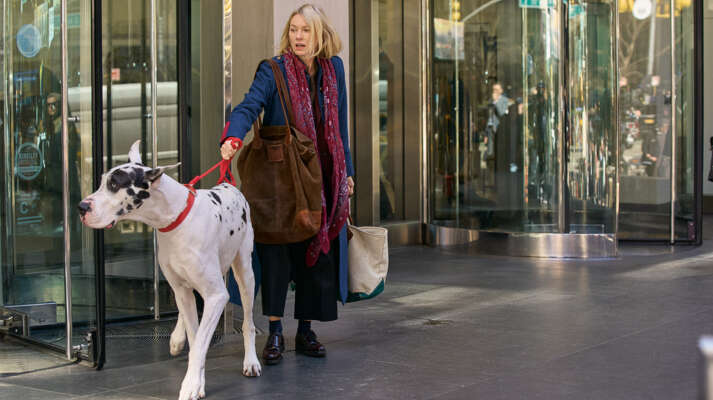Charles Dickens' Gift of Giving
How The Man Who Invented Christmas kept charity in his heart his whole life
Charles Dickens' Gift of Giving
Written by Peter Bowen
In Bharat Nalluri’s The Man Who Invented Christmas, Charles Dickens (Dan Stevens) took on the project writing A Christmas Carol to revive his career and pump up his bank account. But as he wrestled with the tale of how Ebenezer Scrooge (Christopher Plummer) changed his miserly ways and embraced the holiday spirit of charity and merriment, Dickens found his own belief in the power of the season shifting as well. In Les Standiford’s book The Man Who Invented Christmas, the work that inspired Susan Coyne’s inventive screenplay, Dickens’ holiday volume helped usher in many of the holiday traditions we still love today. But Dickens also brought a new focus to the joy of giving that fuels our Yuletide merriment. “Dickens makes us remember that there are bigger things in life than our own selfish interests,” notes Coyne. While Dickens had always brought a particular social consciousness to his work, A Christmas Carol reignited in him a passion for caring for those in need all year long.
Terrible times inspired A Christmas Carol
Dickens first conceived A Christmas Carol after giving a talk on October 5, 1843, at Manchester’s Athenaeum, an educational center for the working class. Sharing the stage with the social reformer Richard Cobden and the politician Benjamin Disraeli (who’d become Prime Minister 25 years later), Dickens spoke passionately about society’s responsibility for educating and caring for its impoverished children. Without help, the poor were forced to walk a path “of jagged flints and stones, laid down by brutal ignorance,” Dickens told the crowd. After the event, he rambled through the streets witnessing firsthand the conditions he’d just lamented. Manchester, which had seen unchecked growth from rapid industrialization in recent years, was so awash in poverty and abuse that Friedrich Engels called it “Hell upon Earth.” But it was here that Dickens first imagined the story that would become A Christmas Carol.

Dickens calls for change
For the next few months, Dickens poured his creativity into transforming a ghost story into a masterpiece of English literature, into a tale that not only showcases the deplorable conditions of the poor and working class, but also suggests a way forward. Of course, using his fiction to lay bare social ills was nothing new for Dickens. His 1837 Oliver Twist directly addressed the plight of children and the criminal gangs in London. In his 1838 Nicholas Nickelby, Dickens took aim at abusive educational institutions, especially in the cruel punishments meted out by the headmaster Wackford Squeers. And later he would provide an unflinching look at the collateral damage inflicted by unfettered industrialization on the working class in Hard Times. But few of his social novels also delivered such a clear and joyous message of hope as A Christmas Carol did. “What Dickens wanted was for us take it upon ourselves to be more generous,” explains The Man Who Invented Christmas producer Susan Mullen. “That we should lend a hand, that we must care for others—it’s a beautiful message. And it really did change the way everybody viewed Christmas.”

He took charity seriously
Dickens used his celebrity and cash to aid charitable institutions. Over his life he supported in various ways over 43 different charitable organizations, including Poor Man’s Guardian Society, The Birmingham and Midland Institute, the Metropolitan Sanitary Association, The Orphan Working School, the Royal Hospital for the Incurables, and the Hospital for Sick Children. Sometimes he would give money, other times he would push the more powerful and wealthy to contribute, but more often than not, he would lend his talent in support as well. For the Hospital for Sick Children, Dickens wrote a stirring article about the institution in his magazine Household Works when it opened. While the writer gave generously, he was no pushover. He regularly poked fun at a society of do-gooders lining their own pockets. “For a good many years I have suffered a great deal from charities,” Dickens wrote in a letter. “Benevolent bullies ride up in hansom cabs…and stay long at the door.”

Getting personally involved
In addition to lending his name and purse to established charities, Dickens was famous for his personal acts of kindness. In 1843, just months before he wrote A Christmas Carol, the actor Edward Elton died suddenly, leaving his family destitute. Dickens stepped up to form a committee to raise money to care for Elton’s orphaned children. Throughout his life, Dickens would quietly give money to friends and associates in need.
When he deeply believed in cause, Dickens would go further than just raising money or public attention. In 1846, he was instrumental in the founding of Urania Cottage, an institution that provided housing and support for unwed mothers and, in the terms of the times, “fallen women.” In addition to helping find the location and designing the structure, Dickens personally interviewed potential staff. He also threw his support behind the Field Land Ragged School, which provided free education to destitute children, even though he had reservations about the school’s evangelic tenor. In 1853, Dickens had become so well known for his generosity that his friend and sometimes rival William Thackery expressed in a lecture, “I take my share of the feast of love and kindness, which this gentle, and generous, and charitable soul has contributed to the happiness of the world.”


